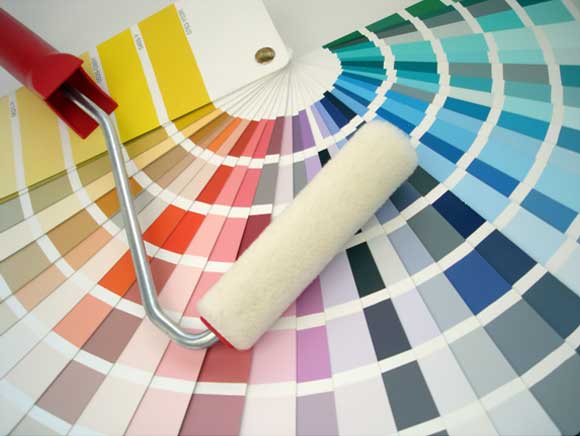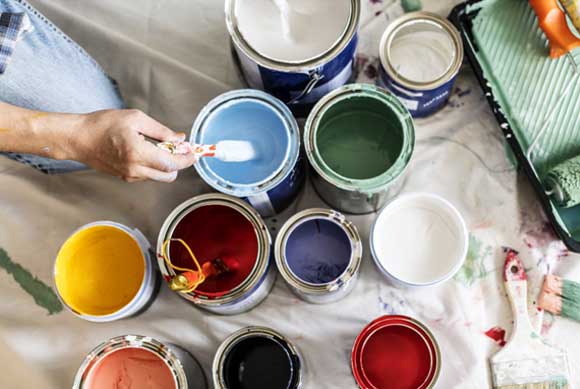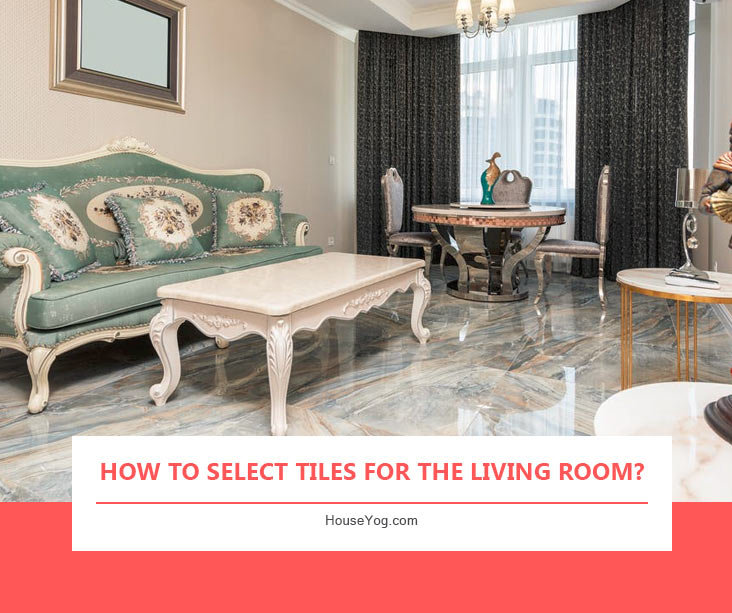Welcome to your personal guide on deciding the best color scheme for your home! It’s time to bid goodbye to those boring, drab walls and embrace a splash of personality and style with the right shades of color.
Importance of selecting the right color scheme for your home decor
Choosing the perfect color scheme for your home is not just about aesthetics, it’s also about creating a positive and inviting atmosphere. The right paint colors can invoke feelings of peace, warmth, excitement, or tranquility. From your living room to your kitchen, every room can benefit from a carefully selected color palette.
Brief explanation of color psychology and its impact on emotions and mood
Ever wondered why fast food chains often use red in their branding or why we relax in a room painted in soft blue hues? This is where color psychology comes into play. It’s the study of how different colors can affect our mood and emotions. For instance:
- Red can evoke feelings of energy and excitement.
- Blue stands for tranquility and peace.
- Yellow inspires happiness and creativity.
- Green symbolizes nature and promotes relaxation. So, the next time you pick up that paintbrush, remember these points and let color psychology guide your home decor choices.
Understanding Color Theory
In order to choose the perfect color scheme for your home, the first step is to understand the basics of color theory.
Explanation of the color wheel and primary, secondary, and tertiary colors
The color wheel is a visual representation of colors arranged according to their chromatic relationship. It starts with three primary colors: red, blue, and yellow. Mixing these primary colors produces secondary colors: green, orange, and purple. Tertiary colors are created by further mixing primary and secondary hues. The color wheel is an incredibly useful tool for understanding how different colors relate to each other and how they can be combined to create a visually appealing palette.
Overview of warm and cool colors and their characteristics
Colors are often categorized into warm (red, yellow, and orange) and cool colors (blue, green, and violet). Warm colors are vibrant and energetic, making a room feel inviting and cozy, while cool colors can bring a calming and relaxing vibe to the space.
How to use complementary colors to create contrast and balance
Complementary colors are pairs that are opposite each other on the color wheel. This pairing creates a high contrast, causing each color to appear brighter. Using complementary colors can bring balance and energy to your home’s interior design.
The concept of monochromatic and analogous color schemes
Monochromatic color schemes use different shades and tints of one base color, offering a sophisticated, harmonious look. Analogous color schemes, on the other hand, use colors that are next to each other on the color wheel, providing a rich and colorful design without harsh contrast. These schemes can create varying moods and atmospheres within your home, providing endless possibilities for your home decor.
Considerations for Choosing a Color Scheme
There are a few key considerations to take into account when deciding on a color scheme for your home. For a truly cohesive look that resonates with your personal style and meets your needs, remember to factor in the following:
Assessing the purpose and function of each room in your home
Before picking out paint colors, think about how each space is used. For example, you might want a serene and calming color in your bedroom to encourage restful sleep, whereas a lively, vibrant color might work better in an entertainment or family room.
- Kitchens and dining rooms could benefit from warm, appetizing colors like reds, oranges, and yellows.
- Workspaces often come alive with cool, stimulating colors like blues and greens.
Determining the desired mood and atmosphere for each room
Using color psychology, you can greatly influence the mood of a room. Cool tones like blues and purples often create a calm and soothing environment, while warm tones like reds and yellows inspire excitement and energy.
Evaluating the natural lighting and dimensions of the space
Lighting can dramatically affect the appearance of a color. A room with plenty of natural light may be well-suited to darker hues, while a smaller, dimly lit room might benefit from lighter shades to help make the space feel larger.
Incorporating existing furniture and decor into your color scheme
Finally, take a good look at the furniture and decor you already own. If you have a favorite piece of art or a beloved sofa that you want to keep, ensure that the color scheme you select will complement these pieces rather than clash with them.
Using Color Psychology to Inform Your Choices
Color psychology is a powerful tool when it comes to choosing the perfect color scheme for your home decor. It’s not just about which colors you love; understanding the feelings and moods that colors can evoke will help you create the ambiance you desire.
Exploring the emotions and moods associated with different colors
- Reds tend to stimulate and energize; they’re great for rooms where lively discussions happen.
- Blues have a soothing, calming effect ideal for bedrooms and bathrooms.
- Yellows can make a room feel sunny and joyful, while greens emulate a sense of balance and renewal.
How to create a calming and relaxing atmosphere with cool colors
Cool colors, like blues, greens, and purples, can imbibe a calming and relaxing atmosphere in a room. Using them strategically in areas where you want to unwind—like your bedroom or reading nook—can make a significant impact on your mood.
How warm colors can add energy and excitement to a room
On the other hand, warm colors—including reds, oranges, and yellows—can inject energy and excitement into a space. They work well in social areas like the living room or kitchen where you’d like to encourage lively conversation and interaction.
Using neutral tones to create a versatile and timeless look
Neutral tones, such as beige, cream, or gray, can create a versatile and timeless look. These colors are perfect for those who prefer a minimalist aesthetic or want a canvas they can frequently dress up with pops of color in furniture and accessories. Neutrals can also balance out any strong, vibrant colors you may use in your décor.


Incorporating Paint Colors into Your Color Scheme
Paint colors form a significant aspect of your home decor, therefore selecting the correct hues that complement your overall design is essential.
Steps for selecting the right paint colors for your home
To choose the right paint colors for your home decor, follow these simple yet effective steps:
- Start by considering the existing pieces in each room; observe the colors and patterns and try to find paint colors that could enhance those existing hues.
- Check for color inspiration online or in home design magazines and note the colors that catch your eye.
- Make use of online color palette generators or paint color visualizer tools to see how different colors could look in your space.
Testing paint samples to ensure they complement your desired color scheme
It’s always recommended to test paint samples on your walls before you commit to a color. Paint a small patch and observe the color at different times of the day under varying lighting conditions. This will help you see if it truly matches your desired color scheme.
Tips for creating flow and cohesion between rooms with different paint colors
Achieving continuity and flow between rooms with different paint colors can help unify your space. Here are some tips:
- Repeat certain elements (like color or texture) from room to room.
- Use different shades of the same color in multiple spaces.
- Decide on one color to be a constant in all the rooms.
Considerations for accent walls and statement colors
Accent walls or statement colors can change the feel of a room significantly. When choosing bold colors, consider the mood you want to evoke. Remember, bold doesn’t always mean bright. Dark, rich colors can create an ambiance of drama and elegance too!


Balancing Bold and Neutral Colors
Deciding on the perfect color scheme for your home can be a tough task, but fear not! You can strike a balance by strategically playing with bold and neutral colors. This blend can create a wonderfully appealing aesthetic to your home decor that is both unique and soothing.
Mixing and Matching Bold and Neutral Colors for Visual Interest
Start by compartmentalizing your space – the key is to decide which areas you want to pop and which you want to soothe. Consider applying bold colors to large furniture or central walls, while accent pieces should be doused in neutral tones. This simple idea can instantly add some visual dynamism to your living or workspace.
- Bold tones for large furniture or walls: Red, Emerald, Royal Blue
- Neutrals for accents: Beige, White, Gray
How to Create Focal Points and Highlights with Bold Colors
Bold colors aren’t just for drama. They can also be used to highlight some architectural features or prized possessions in your space. This could be anything from a beautiful mantelpiece to a piece of art. A splash of bold paint here acts like the spotlight on the showstopper!
Using Neutral Color Palettes to Create a Calming and Sophisticated Look
On the flip side, neutral colors lend harmony and sophistication to a space, making it feel calm, spacious and open. Try using warm neutrals like beige or cool tones like gray to instill a sense of serenity.
Tips for Incorporating Pops of Color without Overwhelming the Space
Introducing color doesn’t have to mean painting an entire wall. Remember, less is often more. Try using small quantities of bright, bold colors in throw pillows, lamps, or rugs against a backdrop of neutral colors. This will brighten your space without it becoming overwhelming!
Practical Tips for Implementing Your Color Scheme
While selecting a color scheme for your home can seem overwhelming at first, a few helpful strategies can streamline the process and help you feel more confident in your time.
Experimenting with different color combinations using design tools and apps
In the era of modern technology, there is a multitude of design tools and applications available that allow us to experiment with various color combinations virtually. Software like Adobe Color, Coolors, or apps like Home Design 3D enable us to see how different paint colors would look in a particular room, making the decision process a breeze.
Seeking inspiration from home decor magazines, websites, and social media
Inspiration is everywhere! Flip through home decor magazines, search for ideas on websites like Houzz or Pinterest, or even get inspired by people’s homes on Instagram. Seeing how others played around with their color scheme can give you unique ideas that you might want to incorporate.
Consulting with an interior designer for professional guidance
While there is no substitute for professional guidance, consulting with an interior designer can offer a broader perspective. They can guide your decision based on your home’s architecture, the amount of natural light, and current design trends to create a cohesive look.
Testimonials from homeowners who successfully implemented their color schemes
Finally, nothing builds confidence more than hearing success stories from homeowners who have successfully implemented their color schemes. Gon through some testimonials, ask questions and consider what worked for them. Their experiences might enlighten you to an entirely new perspective or confirm your existing choices, ensuring that you’re on the right track.
Recap of the importance of choosing the right color scheme for your home
The main takeaways? It’s paramount to select a color scheme that speaks to your personality and resonates with the vibe you want to establish in your home. Remember that your chosen color palette will set the mood for each room and greatly influences both your comfort and overall satisfaction.
- Light or pale shades can make a small space appear larger
- Bright and bold hues can inject energy and vibrancy into a room
- Neutrals can create a serene and calming atmosphere
Final thoughts on the impact of color on our emotions and well-being
After diving into the fascinating world of color psychology, it is evident that our surrounding colors do not just appeal to our visual senses but also impact our emotions significantly. They possess the power to evoke certain moods, affect our well-being, and significantly influence how we perceive and experience a space.
In the end, decorating your home is a personal journey. Feel free to be bold, experiment with different palettes, mix and match – the goal is to find shades that speak to you, colors that feel like ‘home.’ It’s about creating a space that nurtures creativity, comfort, and harmony. Don’t hesitate to break out of conventional color rules because, in the realm of home decor, choosing colors is a personal voyage of self-expression. So go ahead, have fun, and color your world with joy!
Images via Dreamstime Stock Photos and Images







Excеllent items from you, man. I cant wait tο learn far more from you. That is actually a
terrific website.